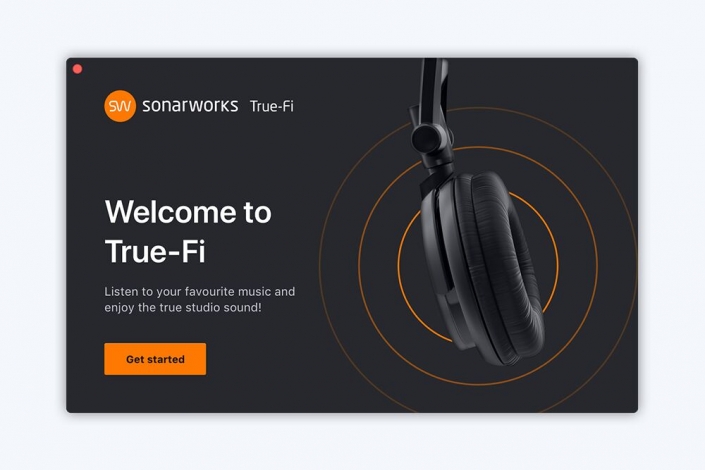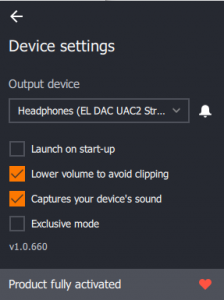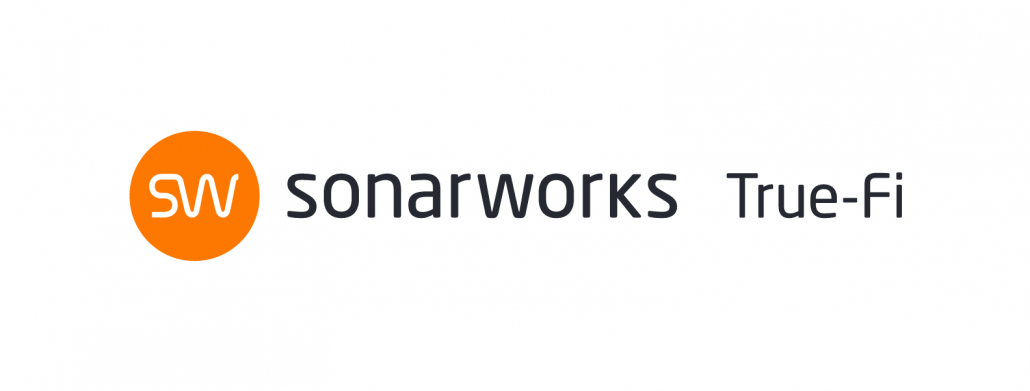
Headphone audio, since its roots decades previously to now, has always been a hardware-oriented field. It makes sense though as it is the production of a physical phenomena of fluctuating airwaves to produce sound and from there music. The typical person would say it’s obvious. Of course, the entire pathway would be hardware! We start with AC transformed into DC powering all our devices. A source which typically has software to hold and manage the digital files in the modern-day sending out those bits to a DAC which then is sent to an amp. The last portion of this pipe, of course, ending up in your headphones.
Software in audio has been around for ages. Simple equalizers changing the shape and curve of the waves output at different frequencies to achieve a desirable result. And this is where history stops for approximately three decades. From the inception of software equalizers being relatively commonplace in the 80s to now in 2018, little has changed on shaping audio. It’s a tacked on component that everyone has heard of and everyone has.
Alas, a company in Europe had a different idea. Their name is Sonarworks, a company out of Latvia from the mind of Helmuts Bēms (CEO and Co-Founder). They saw a frozen clock and within it was software-based sound shaping, the same as ever for the last few decades. With a hammer in one hand and plans in the other, Mr. Bēms smashed the glass and announced True-Fi to the world in 2017.

The first question people ask about True-Fi is what is it and how is it different. To start, I’m first going to let Sonarworks themselves describe it and then go about how I see it from a user’s point-of-view.
Sonarworks Public Relations noted to me that True-Fi technology “corrects the impact headphones have on sound quality”. It does this by using “measurement-based compensation profiles” which it says are used to rectify ‘tonal discrepancies’ within resulting in a “studio reference sound”. Whereas most software-based approaches to headphone audio these days are reliant on high-quality streaming, Bēms says the issue is elsewhere. He says the “biggest problem … is not in the file and stream quality, but the playback”.
There was a lot to take in there but True-Fi can be summed up pretty aptly. Their solution is to use software-equalization but applied on a mass scale to almost every headphone with a target curve. They have a reference sound and response in mind and are essentially trying to craft every headphone to meet that with a unique profile for each. To accomplish this, Sonarworks acquires each headphone and measures them, before finally applying a curve to meet their target. This curve profile is then saved to the True-Fi database and can be applied by the user. What is accomplished here is the “studio reference sound” that Bēms noted previously.
In theory, this would effectively allow you to listen or master audio with any headphone that has had this curve applied to it. As they would all have a profile pointing towards a target sound. Our review today is to see how this would work in practice.
Application:

At the time of this review, over 272 headphones have unique profiles stored on True-Fi. I own five headphones that appear on this list. They are the AKG Q701, Sennheiser HD 6XX/650, Beats Solo2 (won as a prize), Fostex T50rp (Mk3), and Shure SRH440. I have misplaced the SRH440 and the T50Rp are heavily modified so those were not used with True-Fi.

True-Fi is currently a desktop application for Windows and Mac OS. A mobile version for both Android and iOS are in the works. Installing the application on Windows 10 for me was simple and required no technical knowledge. Follow a few prompts, select the headphones you own and you’re off to the races. I was able to use the same serial key to activate the software on my personal desktop and laptop. Do note though that True-Fi is not a cloud application so the headphones and settings you select in one computer will not automatically synchronize over to the other.
Usability:

The application itself is barebones and down-right easy to use. Select your headphone and Enable or Disable True-Fi. The “Personalization” menu is optional and has a selector for your age and gender which is used for calculating expected hearing loss and optimizing for that. The bass boost is self-explanatory. When it works, it just works, but when it doesn’t, it takes some computer-foo to resolve.
Don’t get me wrong, the program works without interference 90% of the time, but it’s the 10% that I’m referring to here. As a reviewer, I have multiple USB interfaces connected that I swap between constantly. True-Fi uses a virtual tunneling of your sound under Windows 10. You don’t select your actual DAC in the “Playback Devices” tab but rather let True-Fi tunnel it with its virtual interface.
The issue here is that both Windows and True-Fi like to do things automatically. Open up True-Fi and it auto swaps your playback device to its virtually created one and attempts a connection to a recent device. Plug in an external DAC that you’ve set as default before and Windows tries to automatically change the default from True-Fi to that. This doesn’t sound hard to resolve but I’ve had issues with my DACs not responding after this mumbo jumbo even after I’ve manually fixed the settings myself. This then necessitates a power cycle of the DAC and quitting out of True-Fi and re-opening it in that order. This has happened with multiple DACs so it seems to be primarily a mismatch between Windows and True-Fi at times.
I’ve also noticed that on computer boot up, I would sometimes need to open up True-Fi and then quit out of it (when I use unsupported headphones) to get video to play on my computer due to how Windows defaults its playback device.
I believe most of these issues stem from Windows and how True-Fi is leveraging its protocol. I do not have a Mac to cross verify these details. They ultimately are minor occurrences but I felt they should be addressed in a review. Especially considering that Windows 10 is the most common desktop Operating System and that this software is geared towards audiophiles who commonly will have multiple DACs or interfaces hooked up.

On the topic of DACs and specialization, let me just say outright that an external amplifier will most likely be needed. It’s highly recommended that you enable the setting that says “Lower volume to avoid clipping” as you WILL get it with True-Fi enabled and that option disabled. Due to how True-Fi works with equalization properties and modern music already maxing out the noise floor you WILL clip if you leave it disabled. With that option enabled, your “volume loudness” decreases by a noticeable amount. During my tests of using my desktop and laptop’s built-in audio output, the volume was not loud enough with that option enabled. This shouldn’t be a problem for the primary target market of this software. If you’re thinking of buying True-Fi to be used directly with your laptop or desktop’s built-in audio, this won’t fly. Your first job with that cash is to buy yourself a DAC/Amp combo and then come back.
One of the qualms I’ve heard is that people want finer adjustment of the frequency ranges. The thing here is that True-Fi is a specialized equalization-based program going towards their own target curve. If you want adjustment of the ranges, get a regular desktop EQ program, there are plenty.
I would rate the general usability of this program to be good out of excellent. It just works most of the time and that in itself is also part of my chagrin. Too many things are trying to “just work” that the automated responses from both True-Fi and Windows get in weird states. But, it takes no more than a day to realize what is going on and adjust how you change audio interfaces and the order to open the program; It’s smooth sailing from there.
Sound:
Approaching the sound requires remembering the goal of True-Fi. It’s the attempt of tuning each independent headphone to a target that Sonarworks has specified. This is for the idea that you can finally have a baseline headphone no matter where in the world or set of cans you have with you. I’ll be judging this section more subjectively and rather than directly reviewing the headphones precision towards a central target, I’m going into this with a far easier approach: Does True-Fi make my headphones sound better?

This is because over using my HD-6XX and Q701 with True-Fi, I’ve found that simply reaching a target isn’t enough. The equalization is making it so the general frequency amplitudes are now similar and they both definitely have a defined ‘color’ to their changes. But at the same time, the sound signatures are still widely different and you can’t change the general tonality, timber, dark or light, cold or warm with True-Fi. If these were cars, it would be akin to the tachometers now moving in a similar style relative to time and its shift points. But the general character of that base car still remains.
I do not master music or have a need for headphones to be baselined to a specification. Does True-Fi do a good job of this? Well, its the only commercial software available that does anything of this type on an institutionalized and centralized scale so yes. But I found that aspect of True-Fi to be the least interesting for me. What matters to me, and most likely to most audiophiles that don’t master music with True-Fi is how much better it can make my headphones sound with a click of a button.
On to answering the question of “Does True-Fi make my headphones sound better?”, the answer is a Yes with an asterisk attached. True-Fi allowed for qualities I wished I had in my Q701 and HD6XX sometimes but also showed me how much I enjoyed the headphones by themselves as well.

(iOS/Android available soon)
Listening to “Thanks To You” by Boz Scaggs on the Q701, I was immediately hit by the increased bass and smoothed vocal range. It was different than the times I’ve heard it before, I wasn’t anticipating something so audible and prompt from the start. With the HD6XX, I found that the sub-bass came through with it and a trickle of vocal intensity broke through its typically vocular laid-back characteristic.
In general, music would be more balanced on both. It was a take at smoothing out the imperfections of the headphones and applying the curve to both add and erase. Almost always, it would add in a dose of sub-bass that was often missing on ‘audiophile’ targeted headphones and ‘straighten’ out the sound in the mid-range. For the most part, it worked and gave me a funner sounding headphone that adapted to almost every genre. Whereas pop and rap were hard to enjoy on the Q701 in the past, it was now an option for me. I no longer had to swap between headphones just to demo one modern pop song my friend sent me, I could leave the Q701 on and enable True-Fi.
At the same time, with True-Fi disabled, it wasn’t necessarily that the stock headphones were ‘worse’. It was just different, simply a color change akin to a base red being tinted maroon for a moment with True-Fi on. They were both part of the same palette and both brilliant and strong, but different.
That the upper-mid intensity of the Q701 was reduced by True-Fi when enabled was apparent. When enabled, the ear-melting sparkle was buttered up and caked into a more generally appealing signature. Disable True-Fi and it was back, and now the profound bass was also gone, but in its place, a wider soundstage and serene feel filled the gap.
It was here with the Q701 that also enlightened me to a flaw in True-Fi. It’s not a magical tool that fixes the issues with every headphone. Some headphones will have issues meeting every portion of the intended target curve and the Q701 was one. The bass response would get muddy and sometimes distort with True-Fi enabled. With modern bass heavy music and even decades old songs such as “Thanks To You”, it could not handle what True-Fi’s curve was attempting. It was with this realization that prompted me to reconsider the idea of True-Fi meeting the target being the primary goal I, the end user, wished for it. Or possibly if I wanted but a ‘different’ sounding headphone that also sounded excellent as well with a single click of a button. My answer was with the later.

But despite all that, I still enjoyed my time with True-Fi. It allowed for a change in my sound like a change in the nozzle of my power washer. It was an in/out, done with a touch of a click and available when I needed it. For the songs that worked well with the baseline target that Sonarworks has, I can enable it, else I can just use my headphones as is.
Concluding Thoughts:

It’s not uncommon for audiophiles to spend hundreds of dollars buying extra knick-knacks. These can include plugs that are Rhodium coated, better interconnects, power solutions and upgrading the DACs/Amps themselves. All to possibly get a tad bit more bass, vocal intensity, or soothing of the mids.
Sonarworks True-Fi offers itself as a compelling option to audiophiles looking to up their game with what may be the most cost-effective option on the market. There is a 10-day free trial offered on their website and that’s all it takes to see if the target that Sonarworks specifies is what you are looking for as a sonic upgrade. At $79.00, if you end up enjoying what you hear with your headphone, it’s already set itself up as the most affordable quantifiable change to your headphone’s sound.
Download the free trial and see if it’s for you. There’s no harm in clicking the big “Enable” button and seeing if your world changes.















Want to join discussion?
Feel free to contribute!